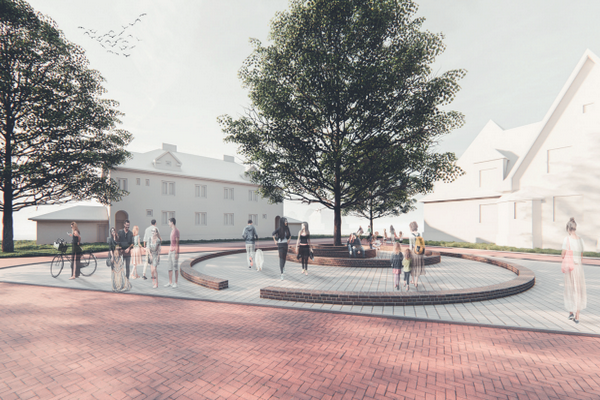Lectures :
1. Introduction of steel structures design, advantages and disadvantages of steel structures, state and perspective of the field development. Production, chemical composition, steel structure, properties.
2. Principles of steel structures design, limit states method, structure analysis, imperfections of steel structures.
3. Classification of cross sections, carrying capacity determination – differences and principles. Resistance of elements in tension, compression and buckling. Shear resistance of compact cross section. Bending resistance of compact cross section. Shear effects on design resistances of the cross section.
4. Lateral displacement and torsional rotation of beams – lateral buckling. Combination of bending, shear and tension or compression. Built-up columns.
5. Connections of steel structures –butt and fillet welds, design principles of welded connections.
6. Connections of steel structures – screw joints, design principles of screw joints without controlled tightening and slip-resistant connections with high-strength bolts.
7. Walls carrying capacity (local buckling due to normal stresses, shear, resistance to transverse, interaction of effects).
8. Elements of steel-concrete structures.
9. Introduction of timber structures design. Structural properties of timber and wood-based materials. Agglomerated wood.
10. Standards for design of timber structures. Theory of design. Loading of timber structures.
11. Design of timber elements according to limit states theory. Tension, compression, bending, shear, torsion.
12. Buckling, bending and torsional buckling, combination of loading, deformation of timber structures elements.
13. Connections of timber structures. Basic principles, carpentry joints, dowel type joints.
14. Fasteners of surface type. Glued joints. Deformation of timber structures connections.
Tutorials:
1. Introduction, physical and mechanical properties (steel), typical cross-sections, basic tension, compression, bending and shear resistance of a cross-section.
2. Weld connections, design principles, WE (worked example) WE01 - Welds of a Fin Plate Connection.
3. WE02 - Bolt Connection of a cantilever - Welds of a Face, WE03 - Welds Connection of Steel Angles.
4. Bolt connections, design principle (normal bolts), WE04 - Bolt Connection of a Cantilever.
5. WE05 - Bolt Connection of Simple Horizontal Beam.
6. Bolt connections, design principles (preloaded bolts), WE06 - Bolt Connection of a Cantilever (preloaded bolds).
7. Buckling resistance, WE07 - Buckling Resistance of a Double-Symmetric Section.
8. WE08 - Buckling Resistance of a Single-Symmetric Section, WE09 - Buckling Resistance of a Member of Two Angles.
9. Buckling resistance of members subjected to bending, WE10 - Laterall-torsional Buckling Resistance of a Beam.
10. Introduction, material properties (timber), types of timber sections, the basic methods of stress, timber sections bearing capacity.
11. Tension and compression, carpentry joints - examples.
12. Buckling, bending - examples.
13. Serviceability limit state - examples.
14. Joints with metal fasteners - nails joint of a tension flange.
1. Introduction of steel structures design, advantages and disadvantages of steel structures, state and perspective of the field development. Production, chemical composition, steel structure, properties.
2. Principles of steel structures design, limit states method, structure analysis, imperfections of steel structures.
3. Classification of cross sections, carrying capacity determination – differences and principles. Resistance of elements in tension, compression and buckling. Shear resistance of compact cross section. Bending resistance of compact cross section. Shear effects on design resistances of the cross section.
4. Lateral displacement and torsional rotation of beams – lateral buckling. Combination of bending, shear and tension or compression. Built-up columns.
5. Connections of steel structures –butt and fillet welds, design principles of welded connections.
6. Connections of steel structures – screw joints, design principles of screw joints without controlled tightening and slip-resistant connections with high-strength bolts.
7. Walls carrying capacity (local buckling due to normal stresses, shear, resistance to transverse, interaction of effects).
8. Elements of steel-concrete structures.
9. Introduction of timber structures design. Structural properties of timber and wood-based materials. Agglomerated wood.
10. Standards for design of timber structures. Theory of design. Loading of timber structures.
11. Design of timber elements according to limit states theory. Tension, compression, bending, shear, torsion.
12. Buckling, bending and torsional buckling, combination of loading, deformation of timber structures elements.
13. Connections of timber structures. Basic principles, carpentry joints, dowel type joints.
14. Fasteners of surface type. Glued joints. Deformation of timber structures connections.
Tutorials:
1. Introduction, physical and mechanical properties (steel), typical cross-sections, basic tension, compression, bending and shear resistance of a cross-section.
2. Weld connections, design principles, WE (worked example) WE01 - Welds of a Fin Plate Connection.
3. WE02 - Bolt Connection of a cantilever - Welds of a Face, WE03 - Welds Connection of Steel Angles.
4. Bolt connections, design principle (normal bolts), WE04 - Bolt Connection of a Cantilever.
5. WE05 - Bolt Connection of Simple Horizontal Beam.
6. Bolt connections, design principles (preloaded bolts), WE06 - Bolt Connection of a Cantilever (preloaded bolds).
7. Buckling resistance, WE07 - Buckling Resistance of a Double-Symmetric Section.
8. WE08 - Buckling Resistance of a Single-Symmetric Section, WE09 - Buckling Resistance of a Member of Two Angles.
9. Buckling resistance of members subjected to bending, WE10 - Laterall-torsional Buckling Resistance of a Beam.
10. Introduction, material properties (timber), types of timber sections, the basic methods of stress, timber sections bearing capacity.
11. Tension and compression, carpentry joints - examples.
12. Buckling, bending - examples.
13. Serviceability limit state - examples.
14. Joints with metal fasteners - nails joint of a tension flange.
